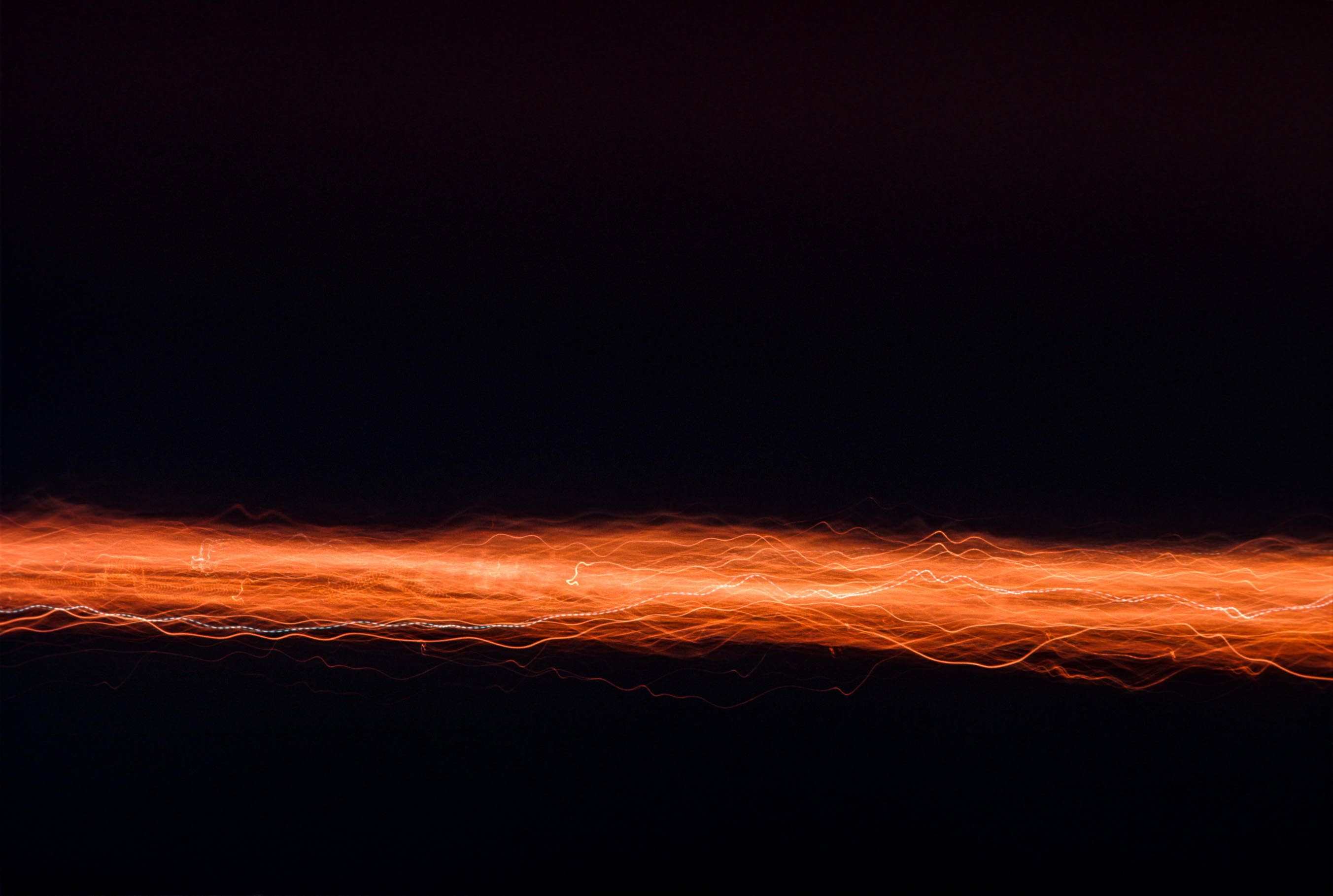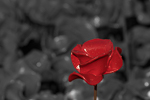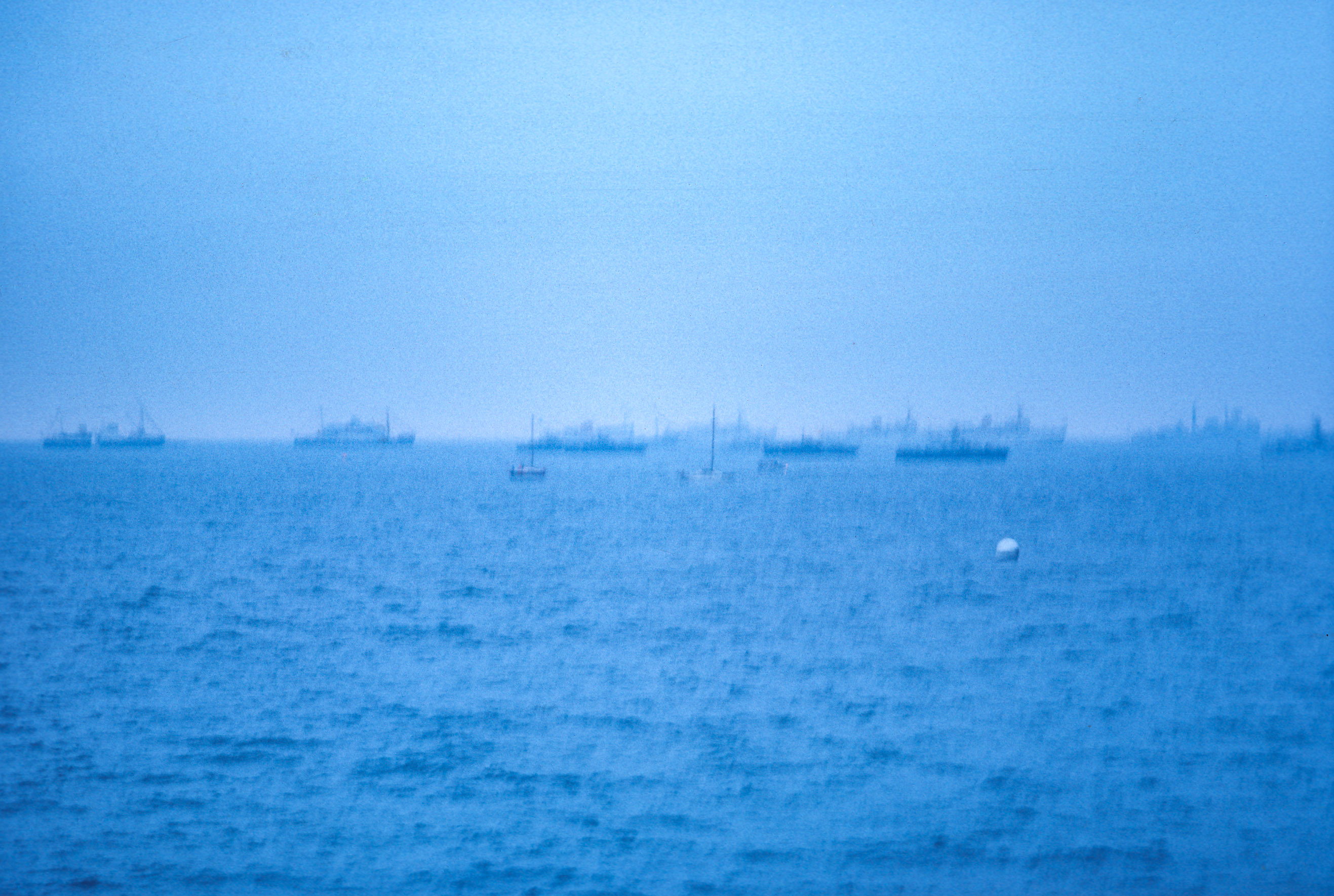Spithead review 1977 for the Queen's Silver Jubilee
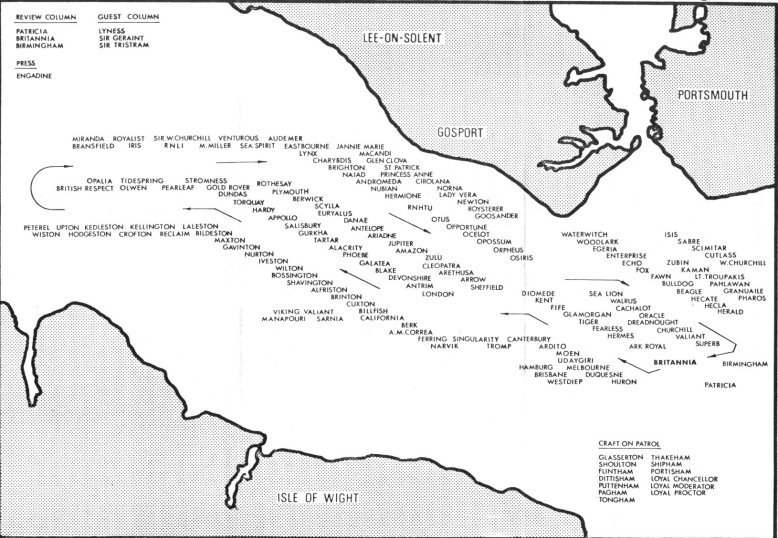
Silver Jubilee Review of the Fleet at Spithead - Anchorage Chart - 28th June 1977.
Apparently Spithead reviews have been a thing since 1346 before sailing for war with France.
This one was not in preparation for war but a celebration for the Queen's Silver Jubilee.
A wealth of information was published in Navy News on 1 June 1977, including, a list of vessels, a colour map, and timetable.
An extract from the New York Times;
More than 180 warships and other vessels lay at anchor in long columns at Spithead, between Portsmouth and the Isle of Wight, their signal pennants popping in a stiff breeze, as the royal yacht Britannia moved past. The Queen, on the Britannia's afterdeck, watched through binoculars as the sailors lining the ships' rails with their arms linked snapped to attention.
Submarines, minesweepers, frigates, destroyers, cruisers and smaller craft had been scrubbed and painted for the occasion—the first royal review in a quarter of a century, continuing a tradition begun in 1415 when Henry V reviewed the fleet before the battle of Agincourt, across the Channel in France.
Visiting Ships From 17 Nations
Most of the Royal Navy was drawn up in the Spithead anchorage, where ships have gathered since Roman times. The thunder of past naval glory echoed in the names painted on their hulls—Fearless and Valiant, Alacrity and Superb, Tiger and Dreadnought. Missing were Britain's pride and joy, her four Polaris submarines—Resolution, Revenge, Renown and Repulse—which are seldom seen by the public..
The inevitable comparison between the Spithead reviews, this one by the Atlantic Council.
The Queen and Duke of Edinburgh, a career officer before marriage, must look back ruefully on June 15 1953, when they boarded the frigate Surprise to review the armada gathered off Spithead to mark the Coronation. The Navy was anything but short of carriers then, benefiting from the surge in construction during the Second World War. Eagle, Indomitable, Illustrious, Theseus and Perseus, lined the way, together with Canada’s Magnificent and Australia’s Sydney. Other carriers were away on operations, from the Mediterranean to the Far East. In all some 300 ships, cruisers, destroyers, frigates and minesweepers, took part in the review, overflown by some 300 aircraft of the Fleet Air Arm.
The fleet had shrunk dramatically by the silver jubilee of 1977 but was the third biggest behind the navies of the United States and Soviet Union. Two aircraft carriers, including Ark Royal, attended, with two cruisers, one assault ship, 17 destroyers, 18 frigates, 14 submarines and a host of minor vessels and auxiliaries. There was no need to flesh out the review with foreign vessels, just 18 attending.
And today? Allowing for inflation, Britain’s GDP is four times greater than in 1953 but the country appears incapable of maintaining a viable fleet. Today it comprises two helicopter carriers, 1 active assault ship, six destroyers, 13 frigates, 42 minor vessels and 13 auxiliaries. Take away escorts on operations or in refit and the Navy would, as Lord West says, struggle to field more than a handful for a review. But one thing our increasingly Ruritanian fleet is not short of is admirals. There are 28 full, vice and rear admirals, one per major combat unit, surely the most over-managed structure in the country. . . .
An aerial view of the ships at anchor can be seen here and another here.
A YouTube collection of stills names a lot of the ships, and another has old film of the day plying through the ships.
The opening shots of the latter is how I remember the weather of the day, grey.
Unfotunatly, that showed in the few photos I took during the day.
My Dad could not come with us, so it was just my Mum and Nan with me. We drove down from Romsey to a carpark on the shoreline.
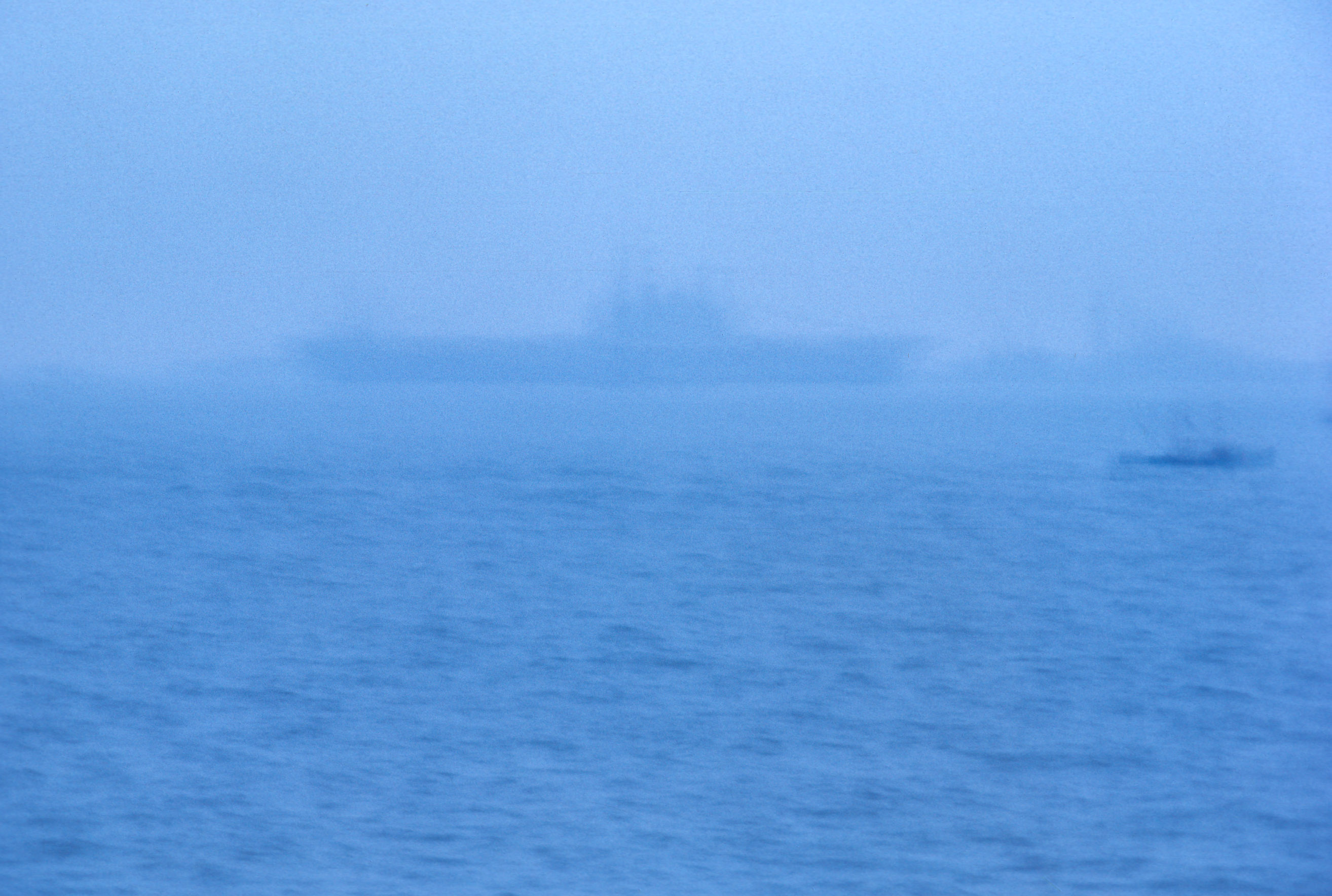
Photos were limited for me as it was the tail end of the day and the light was poor. Looking at the anchorage map, this was quite a distance away. It looks like an aircraft carrier or similar, so it is probably HMS Ark Royal, HMS Hermes, or HMAS Melbourne of the Royal Australian Navy. The photo is not clear enough to make out which it is.
The other daytime photo, at the head of the page, looks as if it is part of the review that was closer to our viewpoint, but still not very clear. ASA 64 photos in these conditions does not do the job, and as it was film, you can't change part way through a reel.
We stayed on for the fireworks and to see the ships illuminated. It looked splendid on the night, but was even more of a challenge to photograph as contested to by the photos below.
At the end of the evening's festivities we returned to the car, only to find that I had locked the keys inside. I think it was a red Ford Escort, a company car. No central locking in those days. We had to wait for a recovery vehicle to attend. The mechanic had the door open in next to no time, and we were on our way home.
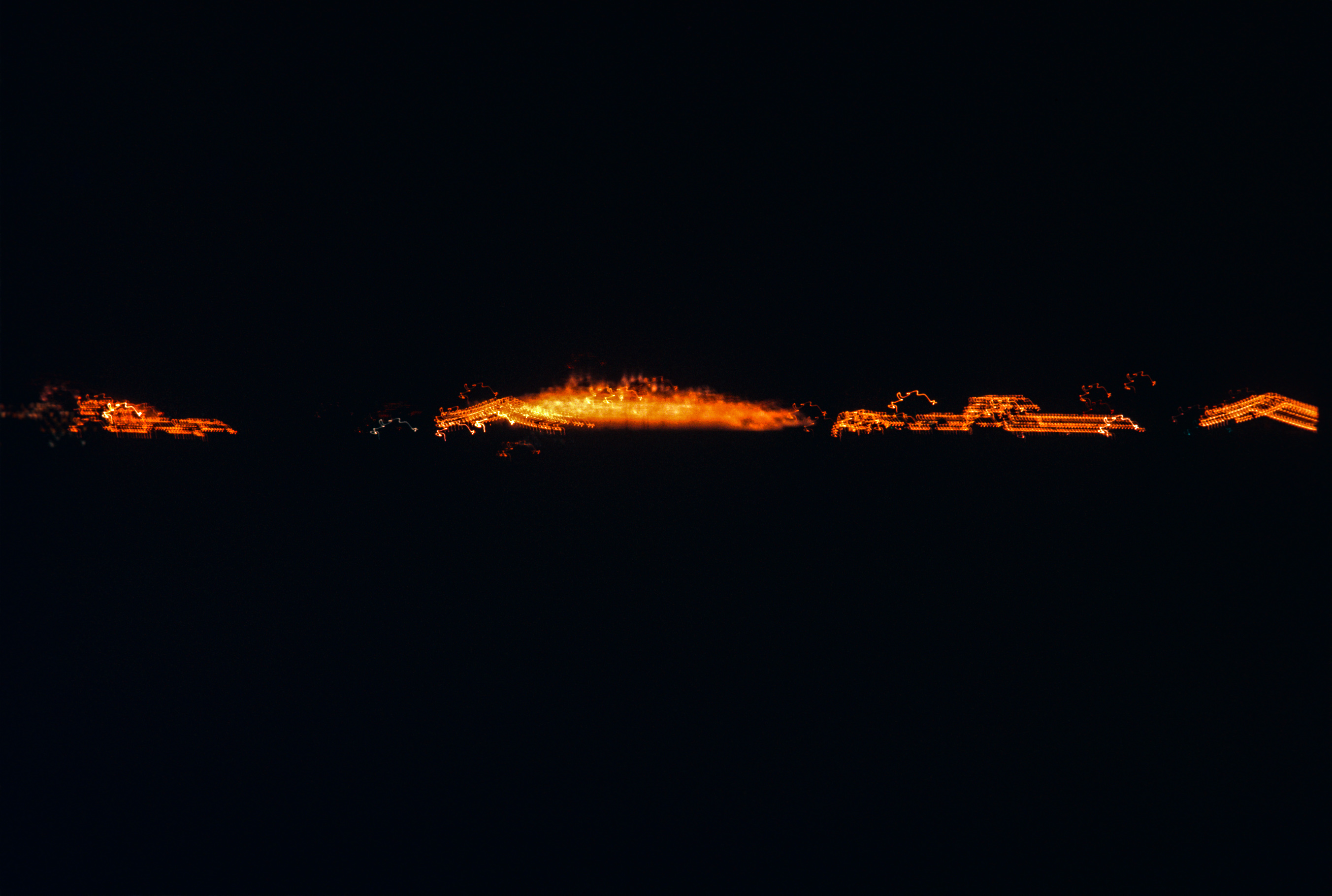
Ships illminated, even fireworks, pretty, but not good for hand held photography. At least there is a vauge outline in the inkblack sea and sky.
Similar but probably closer to us.
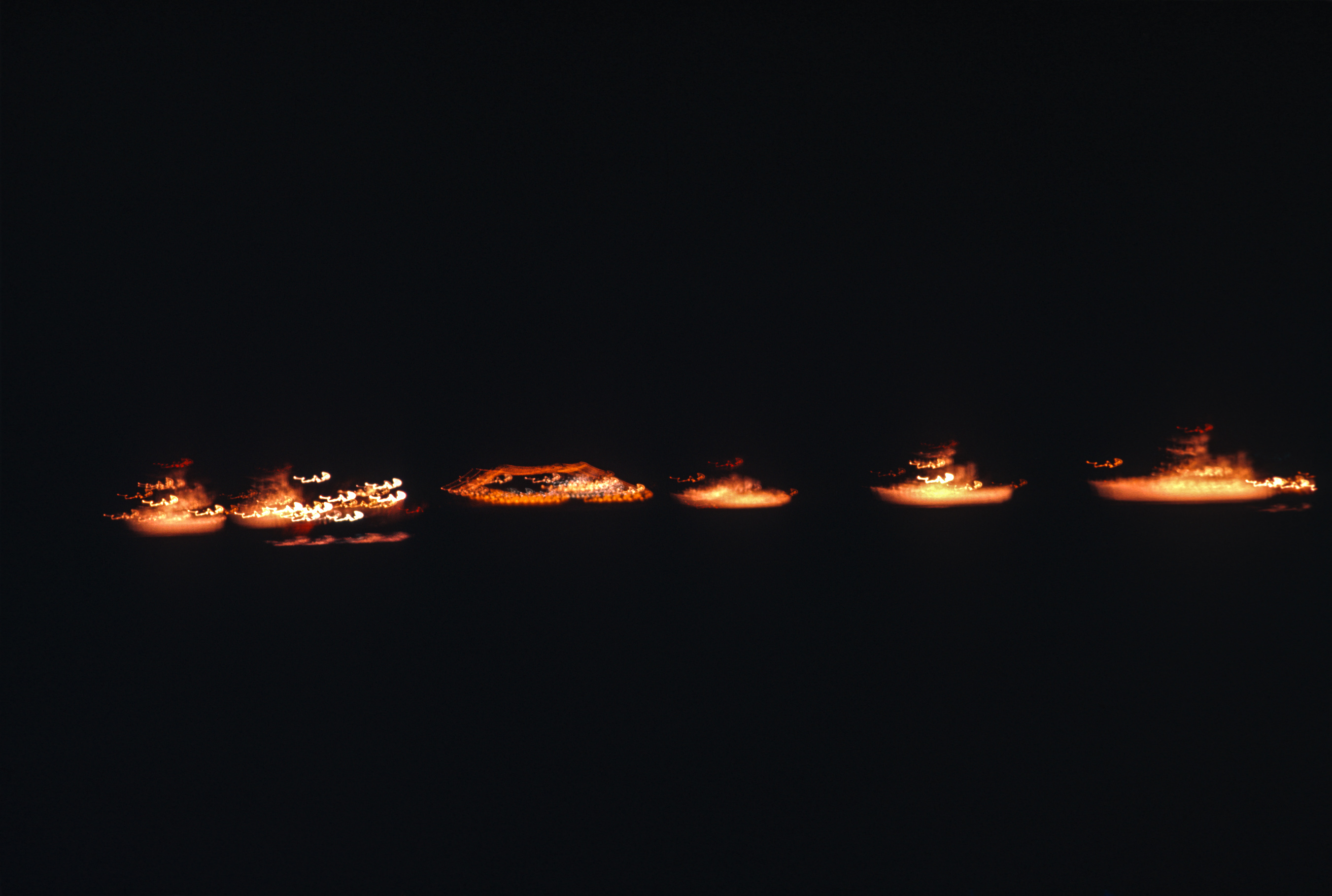
Then a pan shot across multiple ships, as if hand held was not enough of a challenge.
